Throughout history the question of what distinguishes human beings from the rest of creation, and specifically the other animals, has been a subject of lively debate. We have been variously described as ‘the laughing animal,’ ‘the animal that cooks,’ ‘the featherless biped,’ and ‘the only animal that cannot wiggle its ears,’ but beneath these humorous caricatures lies an issue of great importance to our personal and social identity. How we understand our unique and distinctive character reflects assumptions and carries implications regarding the very source and significance of human life—our role within the natural world, the foundations of human dignity and natural rights, and our fullest destiny in the mystery of the unfolding cosmic order.
Christian reflections on this question are grounded in the creation account of the earliest chapters of Genesis, and reach their fullest expression in the living liturgy of the Christian life in union with the incarnation, cross and resurrection of Christ.
On the sixth day of creation, in culmination and completion of the created order, Adam is brought forth (male and female) in the image and likeness of God. Fashioned from the red dust of the earth, and made a living being through the very breath of God, it is immediately evident that human beings have a unique origin and destiny within the order and hierarchy of the created world. Only with the formation of Adam does God declare that his creation is ‘very good’—a pronouncement generally interpreted as applying to man only as he is in proper relationship with the whole of creation.
Adam is given dominion as the ‘keeper and tiller’ of the garden, ruling and subduing it as a kind of co-creator, implying a capacity to comprehend and govern in accordance with the will of the Creator. And, only Adam can give names to the animals, discerning their distinctive powers and purposes within the unity of creation. Yet as a creature he is needy and dependent, relying upon the provision of the Creator who supplies as food “every plant yielding seed” and “every seed in its fruit.” And, he is incomplete until the creation of woman, “bone of my bone and flesh of my flesh”—implying a fundamental relational need, one that carries with it a spiritual meaning and fruitfulness beyond that of the other creatures. Inseparably body, soul, and spirit, he is mysteriously poised between beast and God, sustained as ‘image’ only by the gift of the in-dwelling presence of his Lord and Creator.
With the Fall comes disorder and death, together with shame and fear, a sense of dread in the presence of God. Adam and Eve sow fig leaves together to cover their nakedness, but God makes for them garments of animal skins, foreshadowing the sacrificial blood of justification. Yet, the unique place of humanity within creation is again affirmed and extended. After the flood it is proclaimed by God that, “every moving thing that lives shall be food for you.” And, it is made explicit, that unlike all other creatures, human beings may never be used for instrumental ends: “Whoever sheds the blood of man, by man shall his blood be shed; for God made man in his own image” (Genesis 9:6). Moreover, the psalmist declares, “ Thou hast made him little less than God, and dost crown him with glory and honor”(Psalm 8:5). Even as the living likeness is disfigured, the image of God remains within them, as the long journey of redemptive history begins.
It has been said that the mystery of human life can be understood only within the mystery of God. Indeed, it is the central conviction of Christian faith that these realities converge in the person of Jesus Christ, the incarnate Word of God in whom the fullness of human life is revealed, reconciled and brought to consummation. He is the divine power and presence made manifest in human form, the principle of our creation: “in him we live and move and have our being” (Acts 17:28). “He is the image of the invisible God…. For in him all the fullness of God was pleased to dwell, and through him to reconcile to himself all things, whether on earth or in heaven, making peace by the blood of his cross” (Colossians 1:15,19,20).
In Christ the unity of the human person, body, soul and spirit is restored and lifted to a destiny beyond the original creation. He is the true image of God, in whom “the whole fullness of deity dwells bodily” (Colossians 2:9) and so reveals that the image of God in man is a living image, a relational participation in the very life of God. As we were all in Adam, so may we be in Christ: For as the first man Adam became a living being, Christ, as the last Adam, has become a life-giving spirit (1 Corinthians 15:45). We, as human beings, uniquely among the creatures, are completed and wholly ourselves only when we have in us the spirit of God. In the beautiful words of Augustine: “Deus intimior, intimo meo,” (God is more intimate to me than I am to myself). Lifted by God’s love, we grow ever more alive through the in-dwelling presence of his transcendent power, as our natural life is transfigured by grace: dominion becomes compassionate stewardship of the natural world, eating becomes thanksgiving, mating becomes marriage, suffering becomes service, and death becomes the doorway to eternal life.
The world into which Christianity came forth was racked with cruelty and superstition. Severe asceticism, hyper-spiritualized Gnosticism, and infant sacrifice all reflected distorted notions of the relationship of body, soul, and spirit, concepts corrosive to the meaning of human life. As Christian faith spread throughout the Mediterranean and beyond, it transformed human self-understanding, and with it social structures and practices. Most significantly, within the prayerful reflection and lived experience of Christian faith, a deeper spiritual anthropology was distilled –one that magnified the sanctity and dignity of the human person. Christians rescued the unwanted babies abandoned on the trash heaps of Rome; and abortion, a practice that was widespread in the ancient world, was strictly forbidden in the Didache, one of the earliest Christian writings. A family of faith emerged, transcending boundaries of rich and poor, slave and free; and male and female were recognized as “joint heirs to the grace of life” (1 Peter 3:7).
In the centuries that followed, a more comprehensive theology of the Trinity was forged, allowing a richer appreciation of the distinctive nature and transcendent source of the human person. At the foundation of reality, at the very ground of being, is not a primary physical force or an abstract idea, but the resonant relational love among the eternal, co-existent and uncreated Persons of the Trinity: the Father, Son and Holy Spirit. While affirming the ancient Shema, ‘God is One,’ it is the essential nature of divine love that it is relationally shared within the being of the one God, eternally generative in its reciprocity of self-donation. This all-encompassing, unconditional and unlimited love, the very principle of creation, reaches its fullest expression within the cosmic order in the generation of human persons, partakers as ‘children of God’ in the very life of God. As we participate ever more deeply in the Spirit of love, revealed to us in the self-giving sacrifice of Christ, we express more fully our distinctive nature as personal beings made in the image of God.
In our own age, these reflections, together with new insights from the natural sciences, have distilled into a thoughtful theology of the body and a fuller appreciation of the uniqueness of human beings. Even a cursory consideration of the distinctive character of the human body and mind supports and extends many of the central claims of Christian anthropology.
In the felicitous phrase of Benedict Ashley, the human person is “embodied intelligent freedom.” Conceived in this way, no single capacity or function defines the essence of human nature. Rather, the full human person, body, soul and spirit, forms an irreducible psychophysical unity of lived experience within the dynamic journey of historical being.
Our particular form of embodiment: upright posture, free swinging arms, and fully formed hands with opposable thumb, the range and cross referencing of our senses, including our highly refined sense of sight—all of these extend our reach and realm, allowing a knowing and accurate encounter with the world and a freedom for creative and constructive action within the world. Our furless face, with thirty fine-tuned muscles of expression and vocal articulation, provide the means of intersubjective relationality, social communication and cooperation, allowing cultural transformation and the transmission of accumulated knowledge. And our cognitive capacities for perception, analysis, interpretation and productive imagination, allow a coherent and comprehensive rationality that penetrates to the principles of cosmic order. All of these qualities and capacities combine to make the human being a creature of a radically distinct nature, not simply a difference of degree, but a difference of kind. Unlike animals with a limited repertoire of perception and response, we are adapted for adaptability, open in flexibility and freedom within the world.
But this embodied intelligence, and the freedom it implies, comes with a danger unique to the human species. Sensitive and self-aware, open and indeterminate, we are acutely conscious of the ethical and spiritual dimensions of our lives. Yet, terrified by death and driven by our natural appetites and ambitions toward an imagined ideal of perfect bodies and perfect minds, we are drawn forward by the seductive promise of technological self-transformation.
Torn between the pull of pride, the private lures and longings of self-will, and the aspirations of the our communal moral ideals, the fundamental question arises, “In whose image are we made?” Pascal recognized the full significance of this question and warned that those who sought God apart from Christ, who went no further than nature, would fall into atheism. The natural world, with its strife and struggle, poses a question that it cannot answer: How can there be both suffering and love? Yet with this question the deepest meaning of the material world is opened to understanding. All of creation, and its ordered ascent to mind and moral awareness, may be recognized as a kind of ‘living language’ in a drama of the deepest spiritual significance. Through the resonant relational knowing of faith, the entire cosmic order of time and space and material being may be seen as an arena for the revelation of Love, for the creation of a creature capable of ascending to an apprehension of its Creator; but more profoundly, for the reaching down, the compassionate condescension of Love himself.
It is a beautiful development of history that the words human and humility share a common root in the Latin ‘humus’ meaning earth or soil. Fashioned from the dust of the earth, given life by the very breath of God, and rescued and restored by the free gift of grace, we are radiant with possibility. Unique among creatures, we behold with wonder the majesty of the Creator, and bow before him in worship and praise— humility, gratitude, and abiding faith; these are the true marks of human distinction.
Discussion questions
- In applying the powers of our advancing biomedical technology, could we alter human nature in such a way that we efface the image of God within us?
- Is human spiritual capacity the result of an automatic and autonomous process in our physical development, or the infusion of a genuinely transcendent element in our creation?
- How do spiritual ideas and images align our attitudes and actions within the world?
- How have Christian ideas of the human person reshaped our international policies regarding natural human rights?
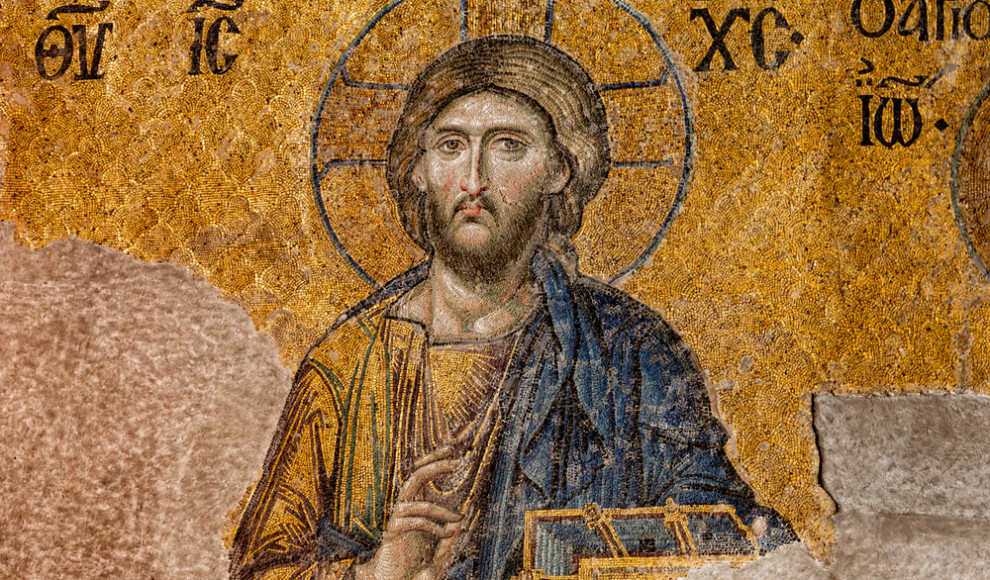


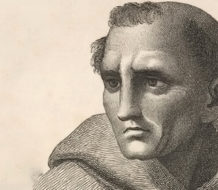
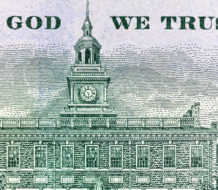
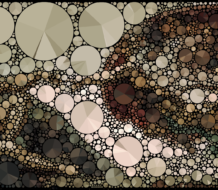
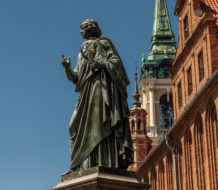
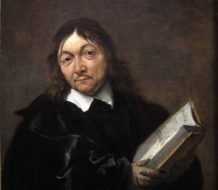
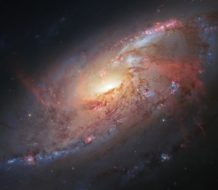
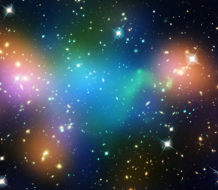
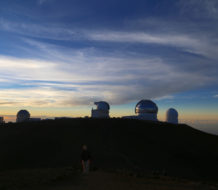

I would suggest that one of the reasons why Christian theology cannot address this question more directly and completely is because it refuses to acknowledge the authenticity of the statements of Jesus in, for example, the Gospel of Thomas; in particular, the statement “On the day when you were one, you became two.”
What this refers to is the difference between the consciousness Created by God and the ‘fallen’ consciousness; or, in the terminology of the Eastern esoteric traditions, the non-dualistic “observing” consciousness and the dualistic consciousness.
Humans are unique not only because they have a consciousness which is different than the consciousness of the animals; but, also, because that non-dualistic consciousness with which man was Created is Revealed through the Revelation of the Memory of Creation (Genesis 2:7) and the revelation of the memories of previous lives; a consciousness which, however, was ‘lost’ through ‘the Fall’, resulting in the dualistic consciousness of the “self” and the ‘thinker’; symbolized in the Revelation of John as, respectively, the “beast of the sea” and the “beast of the earth”.
Michael
In any discussion of the nature of God, the Bible points us to a very particular passage. In John 14:6, Jesus said, “I am the way and the truth and the life. No one comes unto the Father but by me.” Note that the statement was made just prior to his betrayal into arrest and subsequent death.
So no comprehension of the nature or character of God (and by extension, in His image, of man) is conclusive except that which first goes the distance of Jesus’ cross. In short, we ourselves are activated adequately only through the distance that we, each, go of that same cross. This then composes the fundamental nature of life as we embody it.
If mankind removes the genetic formulae that produce our intelligence, or our adeptness, etc, then we would be indeed averting our subsequent character from that of our Founding. But the bigger biological question is, why would we be so obsessed with living impossibly long lives anyhow? In pursuing such rabbit trails we might in effect lose sight of that nasty blood soaked splintery cross, and thus forget all about what makes our lives worth their while.
The statement of Jesus that he was “the Way, the Truth and the LIfe” can be accurately understood only in the context of the Thanksgiving Hymns of the Dead Sea Scrolls and the Scroll of the War of the Sons of Light.
“Truth” to the Jews of that time meant the Law as Revealed at Mt. Sinai; “the Way” is a cryptic reference to the Revelation of “the resurrection” (the Revelation of the Memory of Creation and the revelation of the memories of previous lives) and originates in Chapter 3, verse 24 of Genesis (“…to guard the Way to the Tree of Life.” –also echoed in Chapter 55, verse 9 of the Book of Isaiah: “As high as the heavens are above the earth are My Ways above your ways…”); whereas “the Life” is a cryptic reference to the “Tree of Life” in Genesis, or the Vision of the “Son of man”, referred to in the Thanksgiving Hymns of the Dead Sea Scrolls (written by Jesus; but that research has been censored) as the “Vision of Knowledge”.
This triad also corresponds to the Three Phases in the War of the Sons of Light: 1) the Revelation of the Law; 2) the Revelation of “the resurrection”; and, 3) the Vision of the “Son of man”. And it is through both the Revelation of “the resurrection” and the Vision of the “Son of man” that is Revealed the non-dualistic consciousness with which man was Created by God (Chapter 1, verse 27 of Genesis); also referred to in The Treatise On the Resurrection, found at Nag Hammadi, Egypt, as the “spiritual” resurrection.
Michael
God made humans unique from plants and other animals, but what makes man unique from the man or woman next to him, that is, are there texts as to why has God made one person unique from another?
The topic’s question seems to assume an answer from a Christian’s perspective. If an atheist were to submit an answer, would he or she have something to add to the discussion?
Of course an atheist would have something to add to this discussion, the details of which can be found in the Eastern esoteric traditions, in which what is referred to as the “non-dualistic observing consciousness” corresponds roughly to the consciousness Created by God, (Chapter 1, verse 27 of Genesis and Chapter 6, verse 4 of Deuteronomy) and the dualistic (or “phenomenal”) consciousness of the “self” and the ‘thinker’ corresponds roughly to the “beast of the sea” and the “beast of the earth” in Chapter 13 of the Revelation of John.
This is also what Jesus was referring to in the Gospel of Thomas with the statement: “On the day when you were one [i.e., had a non-dualistic consciousness], you became two [i.e., ‘fell’ into the dualistic consciousness of the “self” and the ‘thinker’].
Michael
Response to comment #2
Thanks for your interesting comment, there are some profound issues involved in the matters you have raised.
First, let me say up front, I am a physician and teach courses in biomedical ethics at Stanford. Although I am a Christian and have some background in theological studies, I recognize that others may have a better foundation of training to respond to certain dimensions of your comment. Nonetheless, I will add my thoughts—and hope that others will do the same.
In citing John 14:6, I agree, this refers to the fullness of love as revealed in the cross of Christ. The cross is at once a visible expression of that self-giving love, a manifestation of the deep character of divine love, and a mysterious action within the cosmic spiritual economy on our behalf. And, I agree, that Christ, as the true image of God, reveals through the cross and resurrection the fullest meaning of human nature and destiny. Clearly, we come to the Father in and through Christ, both in his action on our behalf, and, through our affirmation of the central meaning and power of love.
Part of the mystery is that this is at once a gift of grace and an assent of faith. Of course, grace and faith are two complementary descriptions of a single reality; it is God’s grace that makes possible our faith in his grace. An analogy might be a sunbeam that streams down from above, but is apprehended from below. Indeed, the ancient Latin of Psalm 36:9 (which is the motto of several American universities, including Columbia University) reads: “in lumine Tuo videbimus lumen” (in thy light shall we see the light).
The same mystery is evident in Philippians 2:12,13 when Saint Paul writes, “work out your own salvation with fear and trembling, for God is at work in you, both to will and to work for his good pleasure.” When you speak of ‘going the distance,’ it is important that that means trusting in God’s grace and purposes working in our lives. We all must “take up our cross,” but also remember that, for each of us, our lives will have different challenges and purposes, and that to meet them we must be empowered by the spirit of love working within us. As Saint Paul writes in Ephesians 2:8-10, “For by grace you have been saved through faith; and this is not your own doing, it is the gift of God—not because of works, lest any man should boast. For we are his workmanship….”
This brings us to the second part of your comment, your affirmation of the importance of our basic biological construction, and the dynamic of life experience it delivers. It may be that our lives, as currently framed and constrained, provide a privileged path to the deepest meaning and significance of our existence. Our relational joys and generosities, as well as our struggles and sorrows, engage us in a drama of cosmic proportions and open us to the deepest spiritual needs and insights. Already our modern society has distanced us from some basic realities of life: many of us have never witnessed a birth or seen a dead human being. Indeed, for many people meat comes in plastic wrap; there is little or no recognition that something had to die to sustain our lives. It may be that our biotechnology could alter our lives in a way that moves us further away from the ‘blood soaked splintery cross’ you mention. Thanks for your poignant imagery!
Response to comment #3
Your interesting question was in my mind while writing the essay: what does Christianity suggest about the uniqueness of each individual human person. Had I been allowed a few more paragraphs, I would have enjoyed taking up this important matter.
First, both Christian scripture and tradition affirm the fundamental equality of worth of every human person. From a biblical perspective, all human being, whether or not they believe in God, deserve to be treated with courtesy and respect by virtue of an inherent dignity they have as creatures made in God’s image. And, in the image of the embodied life of Christ, this intrinsic dignity is extended to all human beings, regardless of their weakness and vulnerability, and across all phases of human life, from conception to natural death.
Second, we are all different by virtue of our different experiences of time and place and general circumstances of life. Each of us is on a deeply personal journey, a search for the source, significance and fullest flourishing of our life. And, all human beings, regardless of their state or stage of faith, will have distinct perspectives that can add to our general understanding of the meaning of human life. For that reason, scripture is very clear in warning us not to judge one another, never to seek vengeance and never to even consider ourselves superior to others—we are called to forgiveness and service. This, of course, must extend even to humility about how God is at work in other cultures and other traditions of faith.
Third, there is the interesting existential question of why there is a diversity of distinct human beings. On the broadest level, there are clear biological benefits to this: diversity in the gene pool allows adaptive response to different environments, protective range of response to disease pathogens, and complementary strengths within community. The biblical affirmations of the importance of this diversity are many: we are one body with many gifts, even as there is one hope, one Lord, and one faith (see 1 Corinthinans 12 and Ephesians 4). Moreover, the differences between human beings carry with them spiritual lessons, a kind of spiritual pedagogy. The different, and complementary, natural relations as children and parents, for example, provide us with distinct perspectives and insights, and engender in us a wider strength, virtue and wisdom. Most mysteriously, the complementarity of man and woman is a living paradigm of the deepest meaning of Christ and the Church.
From the broadest perspective, it is clear from scripture that we as individuals are never to be swallowed up in some kind of transpersonal force or impersonal unity of being—we are persons in the image of the eternal personal dynamic of the Trinity. As unique and unrepeatable human persons, we are children of God, created in the vitality of a diversity of personal forms and talents—with all the freshness and joy of unity in multiplicity.
Very profound essay. Congratulations. Rarely seen under the topics of God and the Reality of Man. Christianity is quite unique in externalising this kind of uniqueness of the human nature. `I remember my dad in my early years translating the Quran to us saying that although Mary was a virgin she begot Jesus and that is fundamental in the uniqueness of Jesus. Man was created in the image of God is also a very deep and unique description of what is man. This topic will be translated in due course in one of my papers into scientific terms and language,
Thank you for your interesting and thoughtful comment. As a physician and a teacher of biomedical ethics, I have pondered just how spiritual awareness arises and how moral identity is established. It seems clear that the deepest and most effective communication is personal, both in its medium and its message. Human infants are attuned to faces and establish a resonant intersubjectivity with their mother shortly after birth. From this foundation they develop in a congruence of emotionally grounded communication that sets the relational basis for language and later for the conceptual infrastructure of personal and social identity. Much that could never be taught in abstract or theoretical terms, is opened to us simply by identifying with and engaging other people.
As a Christian, I have thought many times about how love was fully revealed in the life and self-giving sacrifice of Christ. No declaration or demand, no mythology or received account could penetrate and stir our deep hearts the way the living witness of his life of purity, humility and goodness has done. Through his spirit, we live in the image of God, establishing a congruence of identity and a sense of cosmic destiny in union with him. Scientists tend to shun speculations on teleology and ultimate ends, but it seems reasonable to me to believe that such a personal communication and sustained sharing of love might be the very purpose of creation. A fuller explication of this in scientific terms and language would be a genuine contribution.